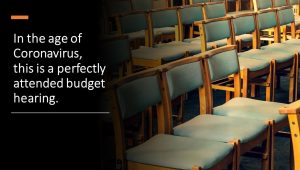

Students participate in an activity that demonstrates the difference between private and public goods to show why it is necessary for the government to provide some goods and services. More about Lesson 3B: Entrepreneurship-Working for Yourself » Unit Four: Paying Taxes They then take a personal assessment to discover other important characteristics of entrepreneurs and determine how entrepreneurial they are based on these characteristics. Students are asked to volunteer for a potentially embarrassing task (which they ultimately do not have to perform) in return for a reward, which demonstrates a characteristic of entrepreneurs. Lesson 3B: Entrepreneurship-Working for Yourself More about Lesson 3A: Investing in Yourself » They then look at the wages for various occupations and consider the role of human capital in explaining the differences in those wages. Students perform calculations-with half the class given information to make the task easier-to demonstrate the importance of human capital in increasing a person’s productivity. More about Lesson 2B: Meeting Financial Goals-Rate of Return » Unit Three: Earning Income Students are shown the two ways that investments can earn a return and then calculate the annual rate of return, the real rate of return, and the expected rate of return on various assets. Lesson 2B: Meeting Financial Goals-Rate of Return

More about Lesson 2A: The Inventory Game-Net Worth and Cash Flow » Students use this distinction to determine net worth, cash flow, and the relationship between them. This demonstration is then related to the stock (an amount at a point in time) concepts of assets and liabilities and the flow (an amount per unit of time) concepts of income and expenses. Students physically move into and out of a “wallet” (a specified area in the room) and note the change in the number of students in the wallet over time, as well as the inflow and outflow rates. Lesson 2A: The Inventory Game-Net Worth and Cash Flow More about Lesson 1B: Making Choices and Identifying Costs » Unit Two: Planning and Tracking The grid is used to evaluate product choices based on ratings from Consumer Reports® and to demonstrate trade-offs and opportunity costs. Students are introduced to the PACED decisionmaking model and grid as a guide to making personal finance choices. Lesson 1B: Making Choices and Identifying Costs More about Lesson 1A: The Wealth Game-Factors for Success » Individual student outcomes of the game are discussed in terms of the four primary determinants of wealth: natural abilities, effort, motivation, and luck. Their task is to increase the value of their wealth by trading their beads with other students.

Students are given an initial set of colored beads with defined values that determine their wealth in one of three categories: poor, middle-class, or rich. Williams, Journal of Economic Education, Fall 1993). Students play “The Wealth Game” (based on “Market Exchange and Wealth Distribution: A Classroom Simulation” by Robert B. Lesson 1A: The Wealth Game-Factors for Success Complete Curriculum (pdf) Unit One: Thinking Economically.PowerPoint slides (.pptx) are provided for the lessons that have visual content. The twenty individual lessons employ a variety of teaching strategies designed to engage students in the learning process and equip them with the knowledge and skills necessary to make informed personal finance decisions.ĭownload the complete curriculum unit or individual lessons (.pdf). The curriculum is divided into 10 themed units, with each unit containing two lessons. The Making Personal Finance Decisions curriculum teaches valuable personal finance lessons grounded in economic theory.


 0 kommentar(er)
0 kommentar(er)
